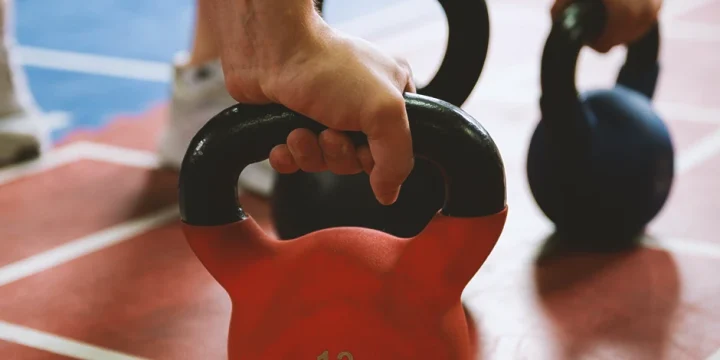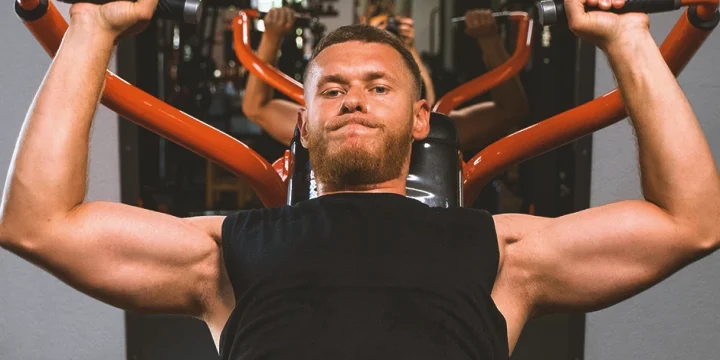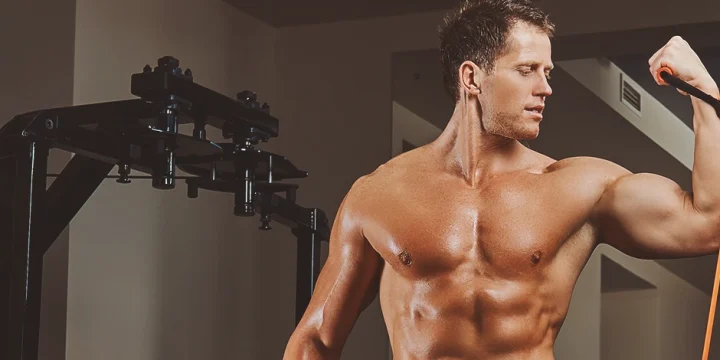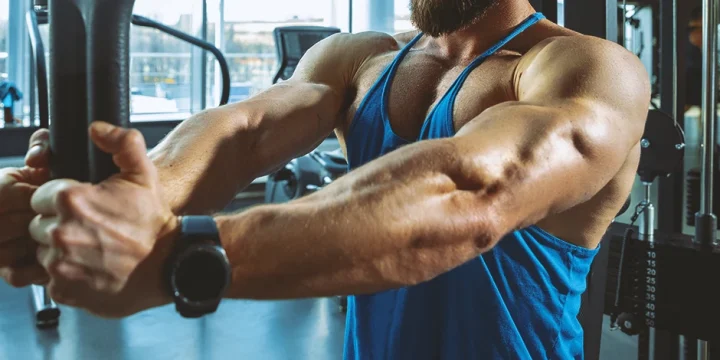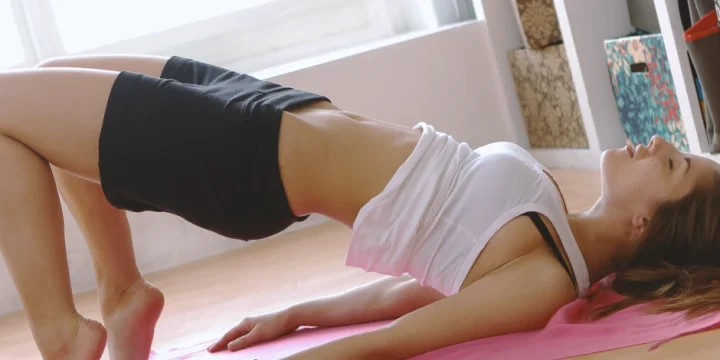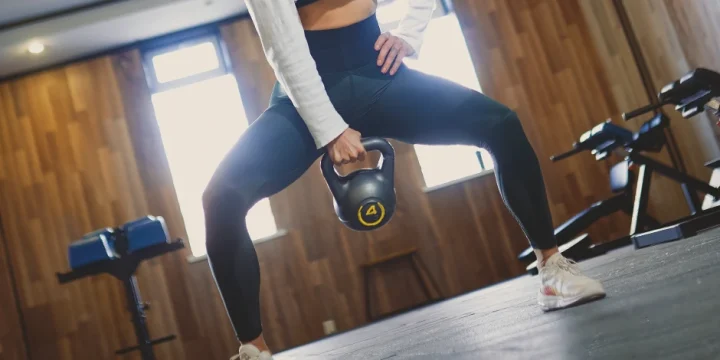Aside from improving your physical appearance, the glutes are the biggest muscles in your body and can have a wide range of benefits in your everyday life and athletic ability.
As a personal trainer, I’ve compiled a list of the nine best exercises you should incorporate into your workout routine to grow your glutes, regardless of your fitness objective, whether it is size, power, or strength.
Quick Summary
- To effectively grow your glutes, include top exercises like standing hip extensions, Bulgarian split squats, and barbell hip thrusts in your workout regimen, targeting size, power, and strength.
- Additional factors for effective glute workouts include mind-muscle connection, adequate recovery and rest, proper diet, and the integration of plyometric exercises like jump squats and box jumps.
- A study in the Journal of Sports Science & Medicine found that exercises like barbell hip thrusts activate over 60% of the Glute Max muscle, highlighting their effectiveness.
- In my professional opinion, consistently practicing these glute exercises, combined with proper form and technique and a clean diet with enough protein (including protein powders), can significantly enhance both physical appearance and athletic performance.
9 Best Glute Exercises

Before exploring the most effective glute exercises for mass, consider these key factors:
- Mind-Muscle Connection: Focus on consciously engaging and feeling your glutes during workouts.
- Recovery and Rest: Ensure adequate rest for muscle growth.
- Incorporate Plyometrics: Alongside regular exercises, periodically add plyometric movements like jump squats and box jumps to enhance glute growth through dynamic, explosive actions.
Now let's get to the glute exercises:
1. Standing Hip Extension
In my fitness classes, I've seen clients quickly benefit from including standing hip extensions in their routines, noticing visible growth and strength in their glutes.
Here’s how to perform standing hip extensions correctly:
- Start by standing with your feet shoulder-width apart.
- Then, hold your right foot firmly on the ground and exert pressure through it while keeping the back straight.
- Slowly return your leg to the starting position and repeat.
2. Bulgarian Split Squat
The Bulgarian split squat is a unilateral exercise for training the glutes and can increase strength and tone in the lower body.
Great for building balance, the Bulgarian split squat works muscles that are often neglected as it's a one-leg movement.
Also, since the knee is less involved in a traditional squat, it can prevent future knee pain and reduce joint damage, as shown in the study from the International Journal of Exercise Science [1].
To begin the exercise, you'll need to:
- Stand a few steps away from a bench or chair with knees bent and feet pointed outward at hip-width apart.
- Then, place one foot back on the bench and hold yourself up with the opposite side leg.
- Slowly lower your body by bending both knees until both knees are at a 90-degree angle before pushing back up again.
3. Barbell Hip Thrust
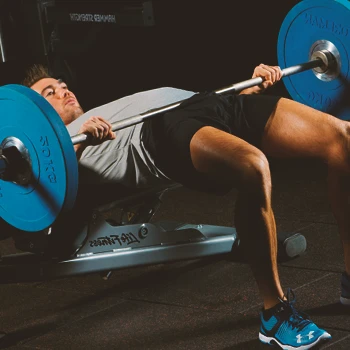
If glute development is your aim, incorporating barbell hip thrusts into your glute workouts should be a priority.
According to the Journal of Strength and Conditioning Research study, barbell hip thrusts are ideal for targeting the gluteus maximus muscle (the largest of the three gluteal muscles) [2].
Moreover, based on a study published in the Journal of Sports Science & Medicine, it's one of the exercises that showed a very high level of Glute Max activation, over 60% [3].
To perform barbell hip thrusts:
- Position your back against a bench with your shoulder blades near the edge.
- Place a padded barbell across your hip crease (lower stomach area).
- Next, engage your core muscles and drive through heels to lift your hips high until there is a full extension in the hips.
- Hold for a second before slowly lowering to complete one repetition as you reach full extension.
4. Barbell Glute Bridge
From my training sessions, I've found the barbell glute bridge to be a powerhouse exercise for glute training, effectively strengthening and balancing all glute muscles.
To perform the barbell glute bridge:
- Lie flat on your back, get a barbell (with an appropriate weight), roll it, and let it set just above your hipbones.
- Bend your knees 90 degrees and plant them firmly.
- Drive through the heels to lift your hips off the ground while squeezing your glutes as hard as possible.
- Drive through the heel to keep good form while holding your body in one straight line from shoulders to knees.
- Lower slowly and repeat to feel the targeted sensation in your glutes.
5. Sumo Squat
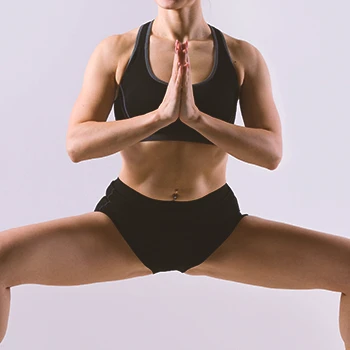
Sumo squats engage multiple muscles in the posterior chain, from the hamstrings to the calves and glutes.
It also makes for an excellent functional strength exercise that can help improve balance and stability.
This powerful lower-body movement requires you to:
- Widen your stance with your toes pointed outward, and inhale as you sit back into a deep squat position.
- Exhale while returning to the starting position.
“As one of the “big three” powerlifts, squats are a surefire way to strengthen your lower body and core. To further challenge yourself, try widening your stance to perform a sumo squat instead. This variation can add variety to your lower body strength training routine.”
- Chelsea Evers, Journalist and Certified Personal Trainer
6. Side Lunge
Side lunges are an efficient way to condition your glutes and improve overall leg strength.
When done correctly, they target multiple muscle groups throughout your lower body, including your glutes, and maximize caloric burn during a workout.
They are easy to perform; all you have to do is:
- Start by standing with your feet hip-width apart, then step your left foot out wide.
- Bend at the same time until the knee of that leg is at a 90-degree angle.
- Return to the starting position, perform one set, and switch to your right leg.
Read More: Side Lunges Stretch
7. Romanian Deadlift
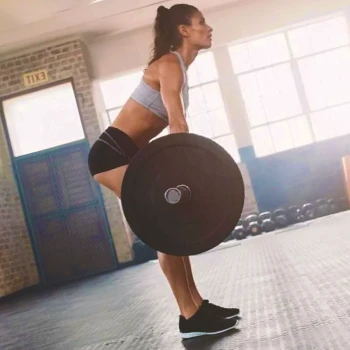
The Romanian Deadlift, or RDL for short, is an excellent exercise for fast and effective activation of the muscles in the glutes and can be done with any weight equipment. RDL is also one of the best deadlift alternative.
RDL variations are easily customizable to fit any strength level or skill level.
To perform RDLs, you should:
- Place your desired weight equipment in front of you and stand with your knees slightly bent.
- Lifting the weight off the ground to about your upper thighs with your back straight and hinging at your hips to move it up towards the body.
- Tighten your glutes, keep your arms close to your sides, and lower the weight somewhere between your knees and toes until you feel an almost stretching sensation in your hamstrings as you exercise.
- Shift your hips forward and squeeze your glutes to return to standing straight.
- Pause for one to three seconds at the top.
- Repeat until you reach the desired reps.
8. Squats
Squats recruit the major muscles involved in lower body strength.
This makes squats one of the most efficient exercises for developing muscle strength in your glutes and core.
To do squats correctly, you must:
- Stand with feet hip-width apart and toes slightly facing outwards.
- Bend at the hips, using your core to keep your back straight, and then begin by sitting back in your heels as you lower yourself down.
- Begin slowly rising back up once you have reached a comfortable depth. Utilize the same form you used down as you push through your midfoot and perform a full lockout of muscles at the top of the movement.
- Repeat for the desired reps.
9. Kickbacks
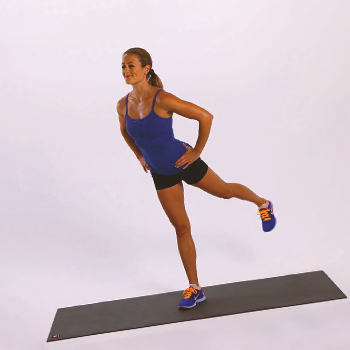
Kickbacks are a great way to activate the muscles surrounding the hip joint, including the glutes, making them work harder as you extend your leg to the back.
As with any exercise form, proper form and technique are key, so take the time to learn them before beginning your kickback rep.
To properly perform kickbacks, you must:
- Standing on both feet facing forward, flex your hips so that they are pushed forward slightly.
- Quickly swing one foot back and then the other in the same situation. Keep your hips forward for balance and maintain focus on whichever leg you plan to do the kickback with.
What is the Primary Function of the Glute Muscles?

The primary functions of the glute muscles are hip extension, hip external rotation, stability around the hip, and hip abduction.
Hip extension - The gluteus maximus, adductor magnus, and hamstrings enable hip extension, which is crucial for walking, running, standing up, and jumping [4].
Internal and external rotation of the hips - These muscles assist in rotating the legs outward (external rotation) and inward (internal rotation).
Stability - The gluteus maximus and medius are key for maintaining balance and pelvic stability.
Hip adduction/abduction - According to the International Journal of Sports Physical Therapy study, the gluteus medius primarily moves the leg outward from the body's center (abduction), while the gluteus maximus's upper fibers aid in abduction and lower fibers in adduction (bringing the leg inward) [5].
What Are the Benefits of Glute Exercises?

The benefits of glute exercises are enhanced performance, injury prevention, and improved stability.
1. Prevent Injury and Relieve Pain
- In my years of training clients, I've seen how prolonged sitting leads to weak glutes, causing back pain and knee injuries.
- Strengthening the glutes is key to supporting the upper body and stabilizing the spine, pelvis, and legs, thus preventing postural issues.
2. Improve Posture
- Strong glutes are crucial for correct posture, offering spine support and pelvic stability.
- This leads to better lumbar health and lower back stability.
3. Enhance Athletic Performance
- Well-developed glutes improve daily activities and athletic abilities.
- Strong glutes provide a solid foundation for upper-body strength, boosting overall athletic performance.
FAQs
How Often Should Glute Exercises Be Done?
Glute exercises should be done at least once to two a week on non-consecutive days, depending on the intensity level, to allow your body to repair and build muscle.
Can I Bulk Up My Glutes?
Yes, you can bulk up your glutes by being on a calorie surplus and performing exercises like squats, hip thrusts, glute bridges, and lunges.
Do I Need to Lift Heavy to Grow Glutes?
No, you do not need to lift heavy to grow your glutes; performing bodyweight exercises like squats, deadlifts, hip thrusts, and lunges allows you to tone up and grow your glutes.
References:
- https://www.ncbi.nlm.nih.gov/pmc/articles/PMC8136570/
- https://journals.lww.com/nsca-jscr/Fulltext/2021/01000/Activation_of_the_Gluteus_Maximus_During.3.aspx
- https://www.ncbi.nlm.nih.gov/pmc/articles/PMC7039033/
- https://www.jospt.org/doi/10.2519/jospt.2010.3025#_i13
- https://www.ncbi.nlm.nih.gov/pmc/articles/PMC3201064/
About The Author
You May Also Like
